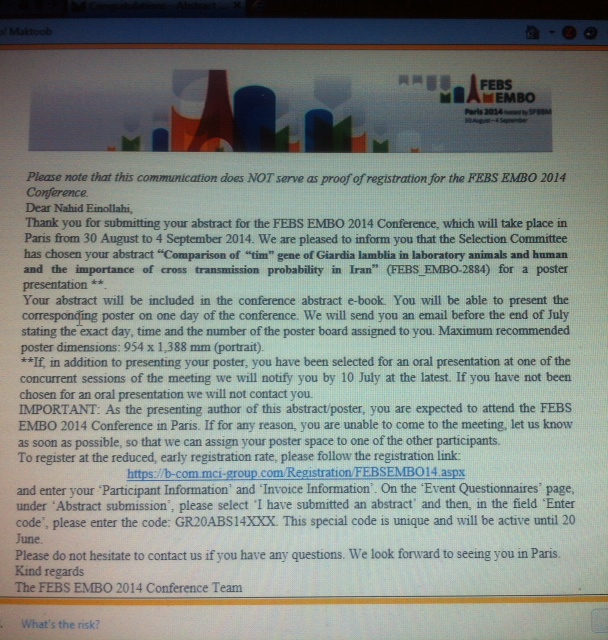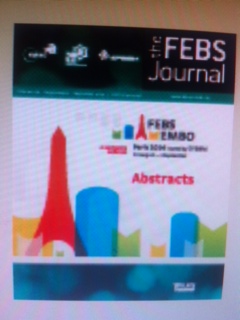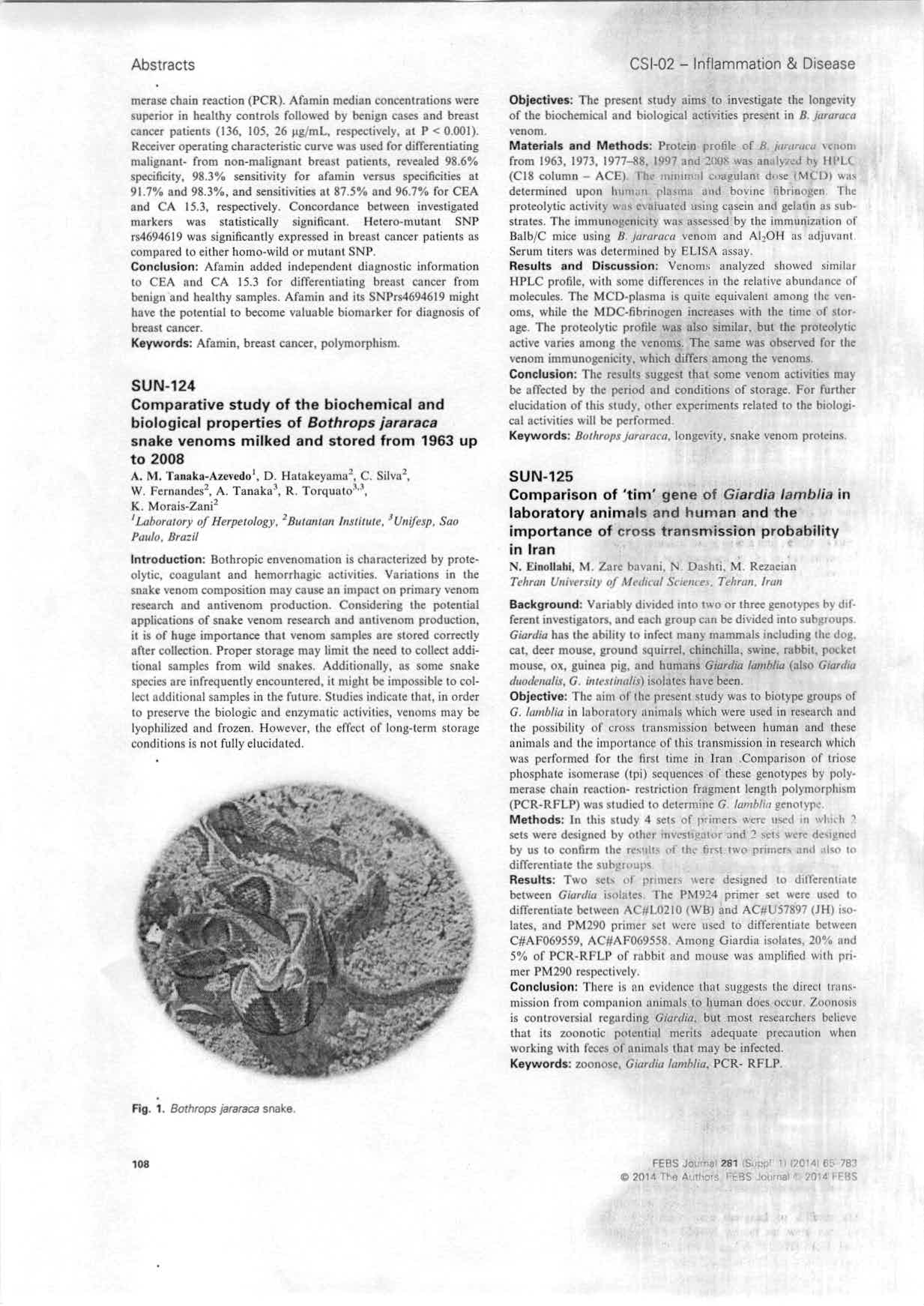|
Title of the Congress : |
FEBS-EMBO 2014 (Federation of European Biochemists Society ,European Molecular Biologists Organization |
|
Title of your Abstract : |
Comparison of “tim†gene of Giardia lamblia in laboratory animals and human and the importance of cross
transmission probability in Iran |
|
country : |
France |
|
From : |
Saturday, August 30, 2014 |
|
To : |
Thursday, September 04, 2014 |
|
Abstract(Please copy/paste the abstract send to the congress) : |
Comparison of “tim†gene of Giardia lamblia in laboratory animals and human and the importance of cross
transmission probability in Iran
Nahid Einollahi* 1, Mitra Zare bavani1, Nasrin Dashti1, Mostafa Rezaeian1
1Tehran University of Medical Sciences, Tehran, Iran, Islamic Republic Of
What is your preferred presentation method?: Poster presentation
Specify what is your 1st choice of session: CSI-02_Inflammation & disease
Specify what is your 2nd choice of session: CSV-04_Host pathogen interactions / Bacterial pathogenesis
Abstract: Â
Â
Background:
Giardia
has the ability to infect many mammals including the dog, cat, deer mouse, ground squirrel, chinchilla, swine,
rabbit, pocket mouse, ox, guinea pig, and humans .Giardia
lamblia
(also Giardia
duodenalis, G.intestinalis) isolates have been
variably divided into two or three genotypes by different investigators,and each group can be divided into subgroups. Objective:The aim of the present study was to biotype groups of G.lamblia in laboratory animals which were used in research and the
possibility of cross transmission between human and these animals and the importance of this transmission in research in Iran.We
have compared the triose phosphate isomerase (tpi) sequences of these genotypes by polymerase chain reaction- restriction fragment
length polymorphism (PCR-RFLP) to determine G.lambia genotype in Iran for the first time.
Methods:
In this study 4 sets of primers were used in which 2 sets were designed by other investigator and 2 sets were designed by
ourselves to confirm the results of two first primers and also to differentiate the subgroups.
    Results:  Two sets of primers were designed to differentiate between Giardia isolates. The PM924 primer set were used to
differentiate between AC#L0210 (WB) and AC#U57897 (JH) isolates, and PM290 primer set were used to differentiate between
C#AF069559 , AC#AF069558 . Among Giardia
isolates ,20% and 5% of PCR-RFLP of rabbit and mouse respectively amplified
with primer PM290(Figure 1) .
  Conclusion:
There is evidence that suggests that direct transmission from companion animals to human does occur. Zoonosis is
controversial regarding Giardia, but most researchers believe that its zoonotic potential merits adequate precaution when working
with feces of animals that may be infected. |
|
Keywords of your Abstract : |
Zoonose , Giardia Lambalia , PCR-RFLP |
|
Acceptance Letter : |
 |
|
The presentation : |
Poster |
|
The Cover of Abstract book : |
 |
|
Published abstract in the abstract book with the related code : |
 |
|
Where has your abstract been indexed? : |
ISI |
|
If you choose other, please name : |
|
|
The amount of registration : |
770 Euro |